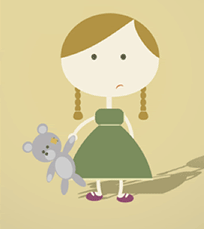Article at a Glance
In recognition of both National Child Abuse Prevention Month and Sexual Assault Awareness Month, we wanted to take the opportunity to educate parents and the community on the devastating effects of sexual abuse.
We hope that by learning more we can protect our own children and the children who live in our communities.
According to estimates by The Centers for Disease Control and Prevention, one in six boys and one in four girls will experience some form of sexual abuse before the age of 18. Every year in the US 3 million reports of child abuse are made involving more than 6 million children. But it is estimated that only about a third of child sexual abuse cases are disclosed and even less are ever reported. Children are equally at risk regardless of background, race, or culture. Living in a safe neighborhood does not make children safe from sexual abuse.
It is important for parents to know that sexual abuse can be devastating and have serious, long-term effects on a child’s well being. Children who have suffered sexual abuse have higher rates of anxiety, depression, substance abuse, dissociative disorders, sexual problems, and suicidal thoughts.
There is no “typical” profile of a child molester. Sex offenders can be male or female, well liked members of the community, or even an older child. Child molesters can be found in schools, churches, sport leagues, families, or other places where they can gain access to children.
Although it is important to teach our children to be careful around strangers, the biggest threat comes from people they know. In about 90 percent of cases, the abuser is known and trusted by the child and the child’s family. Almost 50 percent of the cases are by somebody who is a family member. Although most sex offenders are male, in about 6 percent of cases among girls and 14 percent of cases among boys a woman was the abuser.
The abuse often happens over time as the abuser develops a relationship with the child. The seriousness of the abuse increases as the child molester “grooms” the child and becomes more confident that the child will keep silent.
Sexual abuse is usually not an isolated incident. In a study that interviewed child molesters, it was found that male child molesters who target girls averaged 52 victims each and those who targeted boys averaged 150 victims each. Out of these crimes, only 3 percent had been reported.
By law, Utah is required to make its sex and kidnap offender registry public. The registry is available online so that you can search for registered sex offenders in your area or request to receive an alert if a new offender moves into your area.
It is not uncommon for victims to never disclose what happened or to disclose much later in life. Although not all victims of child abuse show any symptoms, there are some things that parents can watch for.
If you suspect child abuse or find child pornography, be sure to report the incident to the authorities—regardless or whether or not it is a family member or trusted friend.
Sometimes people are tempted not to tell the authorities because they are trying to protect the abuser, they believe they can protect the victim themselves, or they don’t want to put their child through more suffering. Unfortunately this not only puts other children at risk but it means that the child and the offender don’t get the help and counseling they need.
If a child discloses to you, stay calm. Acting angry can frighten the child because many victims are afraid of getting the abuser in trouble. Children need to know that you believe them, that you will protect them, and that they made a good choice by talking to you.
When finding about what happened, be careful not to ask leading questions or do anything that may change the child’s account of what happened. This can cause problems later during trial. It is a good idea to get help from somebody who is trained to interview children about child abuse.
If you have any questions, please contact your pediatrician. We can help you find the answers and resources you need. We hope that through our combined diligence, we can keep our children safer.
